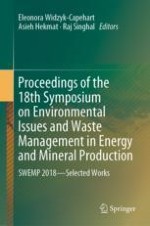The research papers presented in these proceedings volumes cover the latest developments and findings in the fields of mine health, safety, energy, waste management,reclamation and rehabilitation, mine closure and environmental protection.
Authors from over 20 countries with backgrounds in chemistry, engineering, technology and management, and hailing from the government, industry and academia, have contributed to this book.
The contents of this book will be of interest to scientists, engineers, consultants and government personnel who are responsible for the development and implementation of innovative approaches, techniques and technologies in the minerals industries. It will also benefit academic researchers, as it addresses the latest advances in fundamental research.
